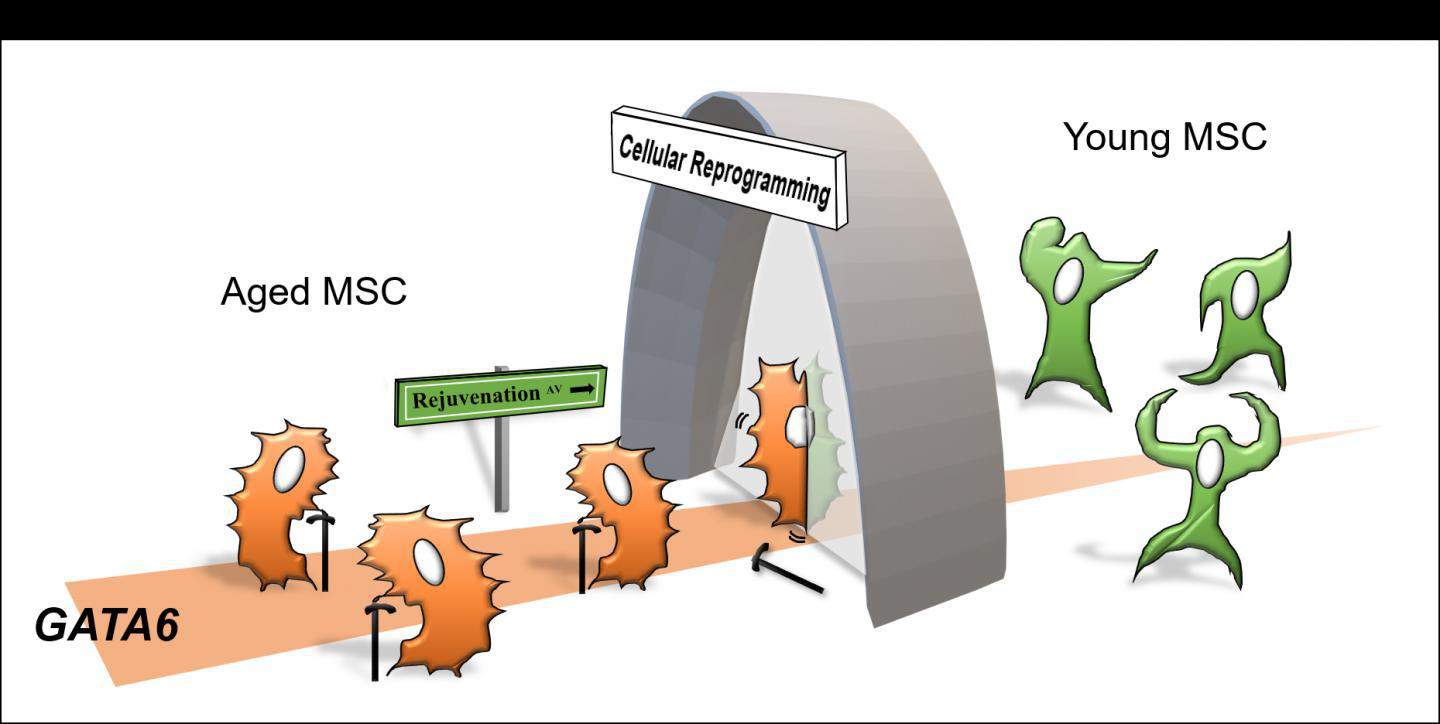
Cellular reprogramming can reverse the aging that leads to a decline in the activities and functions of mesenchymal stem/stromal cells (MSCs). This is something that scientists have known for a while. But what they had not figured out is which molecular mechanisms are responsible for this reversal. A study released today in STEM CELLS appears to have solved this mystery. It not only enhances the knowledge of MSC aging and associated diseases, but also provides insight into developing pharmacological strategies to reduce or reverse the aging process.
The research team, made up of scientists at the University of Wisconsin-Madison, relied on cellular reprogramming – a commonly used approach to reverse cell aging – to establish a genetically identical young and old cell model for this study. “While agreeing with previous findings in MSC rejuvenation by cellular reprogramming, our study goes further to provide insight into how reprogrammed MSCs are regulated molecularly to ameliorate the cellular hallmarks of aging,” explained lead investigator, Wan-Ju Li, Ph.D., a faculty member in the Department of Orthopedics and Rehabilitation and the Department of Biomedical Engineering.
The researchers began by deriving MSCs from human synovial fluid (SF-MSCs) – that is, the fluid found in the knee, elbow and other joints – and reprogramming them into induced pluripotent stem cells (iPSCs). Then they reverted these iPSCs back to MSCs, in effect rejuvenating the MSCs. “When we compared the reprogrammed MSCs to the non-rejuvenated parental MSCs, we found that aging-related activities were greatly reduced in reprogrammed MSCs compared to those in their parental lines. This indicates a reversal of cell aging,” Li said.
The team next conducted an analysis of the cells to determine if there were any changes in global gene expression resulting from the reprogramming. They found that the expression of GATA6, a protein that plays an important role in gut, lung and heart development, was repressed in the reprogrammed cells compared to the control cells. This repression led to an increase in the activity of a protein essential to embryonic development called sonic hedgehog (SHH) as well as the expression level of yet another protein, FOXP1, necessary for proper development of the brain, heart and lung. “Thus, we identified the GATA6/SHH/FOXP1 pathway as a key mechanism that regulates MSC aging and rejuvenation,” Li said.
“Identification of the GATA6/SHH/FOXP1 pathway in controlling the aging of MSCs is a very important accomplishment,” said Dr. Jan Nolta, Editor-in-Chief of STEM CELLS. “Premature aging can thwart the ability to expand these promising cells while maintaining function for clinical use, and enhanced knowledge about the pathways that control differentiation and senescence is highly valuable.”
To determine which of the Yamanaka transcription factors (four reprogramming genes used to derive iPSCs) were involved in repressing GATA6 in the iPSCs, the team analyzed GATA6 expression in response to the knockdown of each factor. This yielded the information that only OCT4 and KLF4 are able to regulate GATA6 activity, a finding consistent with that of several previous studies.
“Overall, we were able to demonstrate that SF-MSCs undergo substantial changes in properties and functions as a result of cellular reprogramming. These changes in iPSC-MSCs collectively indicate amelioration of cell aging. Most significantly, we were able to identify the GATA6/SHH/FOXP1 signaling pathway as an underlying mechanism that controls cell aging-related activities,” Li said.
“We believe our findings will help improve the understanding of MSC aging and its significance in regenerative medicine,” he concluded.
The full article, “GATA6 regulates aging of human mesenchymal stem/stromal cells,” can be accessed at https://stemcellsjournals.onlinelibrary.wiley.com/doi/abs/10.1002/stem.3297.
from ScienceBlog.com https://ift.tt/2Ju04s6
No comments:
Post a Comment